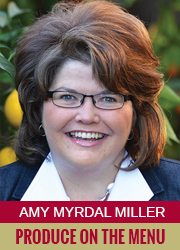Do you like hummus? If so, you like vegetables — and olive oil.  In fact, fresh, high-quality extra virgin olive oil is what makes freshly made hummus so craveable and delicious. Yes, chickpeas and other legumes can be delicious on their own, but by pureeing them with olive oil, tahini, garlic and some salt, create creamy, irresistible deliciousness.
In fact, fresh, high-quality extra virgin olive oil is what makes freshly made hummus so craveable and delicious. Yes, chickpeas and other legumes can be delicious on their own, but by pureeing them with olive oil, tahini, garlic and some salt, create creamy, irresistible deliciousness.
Combining vegetables with olive oil is a strategy most home cooks in the Mediterranean take for granted as one that will get people to eat their veggies. In fact, vegetable consumption is highest in countries like Greece where vegetables swim in olive oil. The Greeks even have a term, lathera, to describe vegetables cooked in generous amounts of olive oil, often with the addition of fresh herbs.
Unfortunately, here in the U.S. many consumers still think eating fat makes people fat, but research doesn’t support this notion. The traditional Mediterranean diet, a moderate fat dietary pattern, contains about 42 percent of calories from total fat and 9 percent calories from saturated fat. Limiting saturated fat intake is important for health, but there’s no reason to limit total fat intake — as long as total calories are in line with your weight management goals and saturated fat intake stays below 10 percent of total calories.
About half the calories in a commercially prepared hummus come from fat, yet fat-phobic American consumers made hummus one of the fastest growing snack trends in this country. Why? It’s delicious, and smart marketers promoted its versatility (It’s a snack! It’s a spread! It’s a dip!) as well as the many ingredients it contains that have positive health halos (e.g., chickpeas, olive oil and garlic).
The 2015-2020 Dietary Guidelines for Americans reinforce the recommendation to consume less than 10 percent of total calories from saturated fat, but there is no mention of limiting total fat. The guidance focuses on healthful dietary patterns with an emphasis on plant-based foods such as fruits, vegetables, legumes and whole grains.
So how do we get people to eat more fruits and vegetables? We say, “Think, cook, and eat like the Greeks!” (Well, actually, that’s what Amy says. Suvir says, “Think, cook, and eat like an Indian!”) Let’s worry less about total fat, and focus on using healthful oils (such as extra virgin olive oil) in cooking. We want people to love and crave vegetable-based dishes, and we want our readers of this column to appreciate the many unique benefits of extra virgin olive oil, both in the cooked and raw forms.
Fresh Facts About Extra Virgin Olive
- Olives are fruit. Extra virgin olive oil is essentially fresh fruit juice.
- Maintaining the freshness and quality of extra virgin olive oil takes some effort and attention; the oil should be protected from extreme changes in temperature as well as exposure to air.
- Packaging matters. Extra virgin olive oil should be packaged in dark brown or green glass bottles that have been flushed with nitrogen after filling to remove oxygen in the head space.
- Fresh is best. Extra virgin olive oil should be used within two years of the bottling date.
- Open bottles of extra virgin olive oil should be used within a few weeks of opening to maintain freshness and flavor.
- Age matters. Store shelves filled with olive oil that is more than two years old should be emptied; the oil has degraded, it won’t taste good, and it won’t convince any consumer to eat more vegetables.
- Extra virgin olive oil can be used for cooking; most home cooks don’t cook at temperatures high enough to significantly degrade the oil or the beneficial polyphenols.
- Polyphenols are naturally occurring substances in extra virgin olive oil that have antioxidant, anti-inflammatory, and other potential health benefits.
- Extra virgin olive oil can be used for baking, too. The matrix of ingredients in baked items protects the oil from degradation during baking.
- Research shows both raw and cooked extra virgin olive oil offer health benefits.
- The polyphenol content of extra virgin olive oil depends on many factors, including olive cultivar, geographical location of the olive orchard, and growing conditions.
- A 2010 study by the University of California, Davis Olive Center showed the majority (69 percent) of imported extra virgin olive oils had significant sensory defects, indicators that the samples were oxidized, of poor quality, and/or adulterated with cheaper refined oils.
- Retailers who want to promote “local” foods should focus on selling extra virgin olive oil produced in the U.S. California is the largest olive oil producing state with one producer (California Olive Ranch) that has nationwide retail distribution.
Think about ways you can promote cooking with extra virgin olive oil in your produce department. You’ll not only be promoting good health; you’ll also be promoting great flavor!
Amy Myrdal Miller, MS, RDN, FAND, is a farmer’s daughter from North Dakota, award-winning dietitian, culinary nutrition expert, and founder and president of Farmer’s Daughter Consulting LLC. Suvir Saran is an award-winning chef and restaurateur. Born in Delhi, India, today Suvir lives on a farm in upstate New York. His next restaurant is scheduled to open in San Francisco in 2016.



